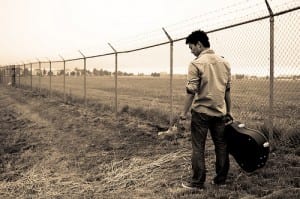 With the holidays approaching, many musicians, music students, and music teachers are starting to make their travel plans. Sure, you’ve got plane tickets and turkey on your mind, but don’t forget about your practice time! Most musicians can easily travel with their instruments with just a little extra preparation, so there’s no need for the holidays to disrupt your music-making.
With the holidays approaching, many musicians, music students, and music teachers are starting to make their travel plans. Sure, you’ve got plane tickets and turkey on your mind, but don’t forget about your practice time! Most musicians can easily travel with their instruments with just a little extra preparation, so there’s no need for the holidays to disrupt your music-making.
Can you bring a guitar on a plane? What about a flute? Does your violin need any extra care while traveling? Read on for answers to these questions and more…
Earlier this year, Congress ruled that any musical instrument that will fit in the overhead compartment of a plane may be brought on board as a carry-on item, which is great news for musicians who are nervous after hearing horror stories about what can happen when you check your instrument (anyone remember “United Breaks Guitars”?). This ruling is great news for violinists, uke-lovers, and guitarists lucky enough to own a great smaller, travel-sized guitar.
Be sure to arrive early for your flight to get a good spot in the overhead bin and always clearly mark your name and contact information on your case.
Musicians traveling with a larger instrument, such as a full-sized guitar or keyboard, should still expect to check their instrument before going through airport security. The TSA also recommends that brass instruments should be packed in checked baggage (Read the full TSA regulations for traveling with a musical instrument). If you choose to go this route, make sure you have a very sturdy hard-case for your instrument, and take extra precaution by filling any empty space in the case with newspaper or bubble wrap.
If it’s in your budget, you might even want to take out an insurance policy on your instrument in case it does still get damaged in flight. However, if your instrument has sentimental value to you or cannot be replaced, you might be better served renting an instrument in your travel destination, as there are no guarantees that every baggage handler will treat your beloved guitar with the same love and care as you would.
Finally, double-check with your airline before the day of your flight to be sure you know exactly what their rules are for musical instruments. Take measurements to see if your case will really fit in the overhead compartment. Also, airline rules often change and airline employees might have different interpretations of what is and is not allowed on a flight. If you’re concerned about any trouble with the airline, print out the company’s policy on carry-on items and musical instruments and have it on hand when you are at the gate. Whatever happens, approaching airline staff in a friendly and respectful way usually leads to better results than arguing and acting out in frustration.
Figuring out if your instrument should be checked or not is only the first step. There are some additional precautions you should take to ensure that your instrument is not damaged in flight.
Guitarists, violinists, and other string-lovers, pay attention! Be sure to loosen your strings before you fly, as changing pressure in the airplane can bend or even break the neck of your instrument. You can tighten up and re-tune when you’ve reached your destination. If you’re traveling to a different climate, you would likely need to spend time tuning anyway due to the changes in temperature and humidity, so don’t skip this step to save time. Violinists will want to loosen their bow hairs a bit as well.
If you’ll be flying with drums, hard cases are the best way to pack and you’ll also want to slightly loosen your drum heads. Again, you’ll be able to tune up again when you reach your destination. Unfortunately, if you’re traveling with your full drum kit you will need to check it.
Changing climates in travel can also affect horn players. Drink plenty of water when you travel and use lip balm to prevent chapped lips, which can make playing painful.
Okay fellow musicians, now that you’ve got your gear packed, we hope you have a safe trip. Bon voyage and happy music-making!
How do you travel with your instrument? Let us know if there’s anything we missed in the comments!
Photo by Thompson C.
Megan L.